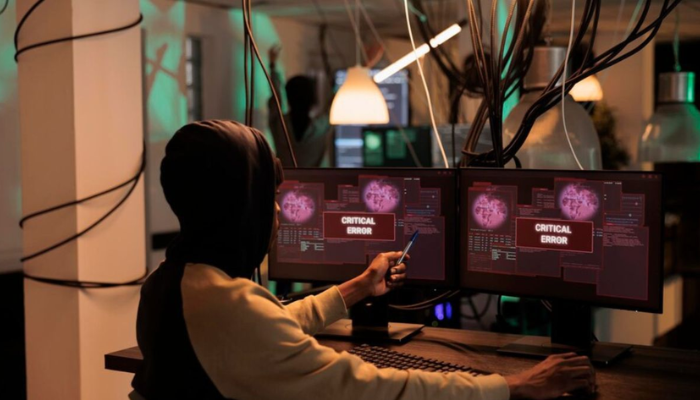The term Sia 588b AITimes has quickly become a focal point for those intrigued by the intersection of artificial intelligence and space exploration. With the rapid pace of technological advancement, humanity’s quest to uncover the mysteries of the universe has taken a transformative leap. Sia 588b, an intriguing exoplanet, has captured the attention of astronomers and AI researchers alike, serving as a fertile ground for innovations at the frontier of science and technology.
In this article, we delve deep into the concept of Sia 588b AITimes, exploring how it represents a new era in understanding the cosmos. From its discovery to its implications for AI-driven research, this narrative is as much about the future as it is about the present.
The Discovery of Sia 588b: A Revolutionary Moment in Astronomy
The exoplanet Sia 588b was identified during a mission aimed at finding Earth-like planets beyond our solar system. Located in a distant star system, its unique properties immediately caught the scientific community’s attention. Unlike many exoplanets, Sia 588b lies within the habitable zone, where liquid water—and potentially life—could exist.
Through advanced AI-powered telescopes and algorithms, astronomers were able to detect subtle changes in the star’s light patterns, leading to the discovery of this promising exoplanet. These AI tools, part of the Sia 588b AITimes initiative, have significantly enhanced the accuracy and speed of such findings. This discovery underscores how AI is revolutionizing space exploration by enabling researchers to analyze vast datasets with unparalleled precision.
The implications of this discovery are profound. Sia 588b’s atmospheric composition and geological characteristics are currently being studied using AI-driven spectroscopic methods. This collaboration between AI and space science marks a milestone in humanity’s quest to answer the age-old question: Are we alone in the universe?
AI in Space Exploration: Transforming the Study of Exoplanets
Artificial intelligence has become an indispensable tool in the exploration of the cosmos. In the case of Sia 588b, machine learning models have been deployed to sift through terabytes of data collected by observatories and satellites. These models identify patterns and anomalies far beyond the capabilities of traditional analysis methods.
For instance, deep learning algorithms used in the Sia 588b AITimes project have enabled researchers to simulate the planet’s environment. By analyzing atmospheric data, these algorithms predict weather patterns, surface conditions, and even potential biosignatures. This not only saves time but also allows scientists to focus on the most promising leads.
Moreover, AI systems are facilitating real-time decision-making during space missions. From navigation to data collection, AI’s role ensures that missions are cost-effective and precise. As we look deeper into the universe, the fusion of AI and astronomy will undoubtedly uncover many more Sia 588b-like planets.
Sia 588b and the Search for Extraterrestrial Life
One of the most exciting aspects of Sia 588b is its potential to host life. Its location within the habitable zone makes it a prime candidate for harboring conditions similar to Earth. But how does AI fit into the search for extraterrestrial life on this mysterious exoplanet?
AI tools are used to analyze chemical signatures in Sia 588b’s atmosphere, searching for elements like oxygen, methane, and water vapor—key indicators of life. These tools also simulate potential ecosystems, providing insights into how life might evolve in such an environment. The Sia 588b AITimes initiative has already produced groundbreaking findings, revealing the potential for microbial life in regions of the planet.
Another dimension of AI’s role is the use of autonomous probes. These AI-powered robots, designed to adapt to extreme conditions, could one day be deployed to explore Sia 588b up close. By leveraging AI, researchers are bringing us closer to answering whether life exists beyond Earth.
The Role of AI in Modeling Sia 588b’s Climate and Ecosystem
Understanding the climate and ecosystem of an exoplanet like Sia 588b requires cutting-edge technology. Through advanced simulations powered by AI, researchers can recreate the planet’s environment in virtual settings, offering insights into its potential to support life.
AI algorithms analyze data collected from telescopes and satellites, creating dynamic models that showcase temperature fluctuations, atmospheric compositions, and potential water cycles. These models are essential for predicting how Sia 588b’s ecosystem might sustain life and for identifying areas of the planet most likely to support microbial or advanced organisms.
The ability of AI to process vast amounts of complex data has proven invaluable. The Sia 588b AITimes platform, for example, integrates global research efforts, making discoveries more collaborative and efficient. These advancements demonstrate that the future of planetary science will be shaped by the partnership between human ingenuity and AI precision.
The Future of Sia 588b AITimes: Bridging Space and AI Innovation
The exploration of Sia 588b represents more than just an astronomical achievement; it signals a paradigm shift in how we approach scientific discovery. As AI continues to evolve, its applications in studying exoplanets will become increasingly sophisticated.
Future projects under the Sia 588b AITimes umbrella are expected to include AI-enhanced telescopes capable of detecting even smaller celestial bodies. Furthermore, the integration of quantum computing into AI models could exponentially increase processing power, enabling simulations that were once considered science fiction.
This journey is not only about finding another Earth but also about pushing the boundaries of what technology can achieve. Sia 588b stands as a testament to the power of interdisciplinary innovation, inspiring future generations to dream big and explore farther.
Conclusion
The narrative of Sia 588b AITimes is one of curiosity, innovation, and possibility. By combining the analytical power of AI with the exploratory spirit of space science, humanity is uncovering new frontiers. Sia 588b exemplifies the potential of this synergy, offering not just answers about the universe but also a glimpse into our technological future.
As we continue to push the boundaries of knowledge, projects like Sia 588b AITimes remind us that the cosmos is a vast, uncharted domain, and AI is our most promising tool to navigate it.
FAQs about Sia 588b AITimes
- What is Sia 588b?
Sia 588b is an exoplanet located in the habitable zone of its star, offering potential conditions for life. - What does AITimes mean in this context?
AITimes refers to the integration of AI in the exploration and study of Sia 588b, highlighting technological advancements. - Why is Sia 588b significant?
Its location in the habitable zone makes it a prime candidate for studying extraterrestrial life and Earth-like conditions. - How does AI contribute to studying Sia 588b?
AI aids in data analysis, environmental modeling, and simulating potential life-supporting conditions. - What discoveries have been made about Sia 588b so far?
Researchers have identified its atmospheric composition and potential water presence, key indicators of habitability. - Can AI-powered probes explore Sia 588b?
While still in development, AI-powered probes are being designed for future missions to exoplanets like Sia 588b. - What role does quantum computing play in this research?
Quantum computing enhances AI models, allowing for more detailed and faster simulations of planetary conditions. - Is there evidence of life on Sia 588b?
No conclusive evidence yet, but early findings suggest the potential for microbial life. - How does Sia 588b compare to Earth?
While similar in some aspects, Sia 588b’s exact conditions remain under study to determine its habitability. - What is the future of Sia 588b research?
Researchers plan to use advanced AI tools and telescopes to uncover more about its environment and potential for life.



